Nestled in the rolling hills of South Lakeland between Newby Bridge and Cartmel, the pretty hamlet of Ayside is the last place you would expect to be spending a sunny afternoon walking with a pack of wolves.
Yet here we are trundling down country lanes towards The National Resource and Experience Centre for the Conservation Awareness of Natural Predators, Predator Experience for short, where the encounter of a lifetime awaits us.
It may be more than 600 years since the last wolf wandered these lands but the reminders that this has always been wolf country are still here in the names of neighbouring towns and villages. To the north is Ulpha, derived from the Old Norse ‘ulfr’ meaning ‘wolf’, and to the south, Ulverston (‘wolf town’) which still features a wolf on its coat of arms. And we’re only a stone’s throw from Humphrey Head where the last wild wolf in England was killed back in 1390.
Predator Experience was established in 2009 by Dee and Daniel Ashman. Situated within its own five-acre site, the centre originally focused on birds of prey, but the Ashmans always knew they wanted to work with larger predators and in 2013 the first wolves arrived.

They now attract visitors from all over the world who come to Ayside to fulfil lifelong dreams to walk foot by paw with these much misunderstood apex predators. As a destination attraction, guests from as far afield as Australia have made a beeline for Cumbria to meet the wolves bringing over £1m a year into the local economy.
For the time being, the experience is only available to small, pre-booked groups of people over the age of 16, and the welfare of the wolves is always paramount, but there are already plans in motion to provide everyone with the opportunity to see these majestic animals up close.
The attraction is undergoing an ambitious £1.4m development to expand and enhance their facilities including the addition of new animal housing and viewing rooms, reception area, parking and comfort facilities with disabled access, an education, training and conference room and a new animal hospital. During the visit Dee and Daniel guide visitors through all aspects of the evolution, physiology, social structure and conservation of the wolf, from their crucial role in the ecosystem as a keystone species to their complicated pack structure and the specific roles each wolf plays.
Guests learn that they communicate through different howls and that their brains are 30 per cent bigger than a dog’s. A lot of what we thought we knew about wolves isn’t true, like there’s no such thing as an alpha male and they’re definitely not the mercurial man-eaters that Hollywood would have us believe.

There is no doubt that the wolf has been much maligned in popular culture. From Little Red Riding Hood to the Three Little Pigs, our childhoods were full of tales to warn us about the big bad wolf and the history of wolves is saturated with this kind of myth making. Dee and Daniel are on a mission to dispel the misconceptions and help people understand the true nature of these beautiful animals.
In truth, wolves are remarkably gentle creatures. They prioritise their families and possess remarkable intelligence. In fact, wolves have a relatively instinctual fear of humans. Rather than pounce on us, they’re more likely to run the other way. It seems that over the generations, wolves have learned that humans can do them harm, so they’d sooner not take the risk.
There are very few recorded wolf attacks around the world and rather than gobbling up your grandma or blowing your house down, the wolves at Ayside are willing to accept you and even welcome you into their pack.
While Daniel goes to get the wolves Dee proudly tells us about their newest family members, three brothers who journeyed from the Dolomites to join the Ashman family last year. “They’re just puppies at the moment,” she tells us. “They had their first birthday in April so it’s a good time to visit because they’ll still come up to you and seek human interaction, whereas they may grow out of that in time.”

After a few quick dos and don’ts from Dee we catch our first glimpse of the wolves as Daniel appears on the hillside with Cheveyo, Chalok and Chitali, meaning ‘spirit warrior’, ‘of the earth’ and ‘shooting star’ respectively. “They’re Cherokee names because they’re North American Mackenzie Valley wolves,” Dee tells us.
There’s a mixture of awe, wonder and a hint of trepidation as they approach. They’re breathtakingly beautiful, two black and one blonde, already bigger than a fully grown German Shepherd and still growing with bright, intelligent eyes.
The feeling of a wolf approaching you, checking you out, and then nuzzling your hand with its wet nose is a sensation that is hard to put into words. It’s almost as if you can feel the raw power of nature coursing through your veins and as you watch them move through their environment with such grace and ease, it’s hard not to be moved by their natural beauty and dignity.
“Essentially, what we’re trying to do here is bring people into their world rather than the other way around,” says Dee, “so you can see them behaving naturally, doing what they naturally would and interacting with each other as naturally as they do. We call it conservation by connection.”

And as if on cue Cheveyo canters towards us and rolls over for belly rubs. “They’re actually very gentle souls, almost zenlike,” says Dee. “And they’re very loving as well.”
It’s a strange feeling to be interacting with a wolf on such a level but it seems we’re more similar than you’d think. “Although they’re viewed as carnivores, they’re actually omnivores,” Daniel explains. “In fact, their diet is very similar to ours so in their world we smell like equals to them.”
Dee adds: “They eat three kilos of raw meat each night, and everything goes – fur, feather, bone, guts, ears, tails, hooves, skulls, they waste nothing. But they also eat vegetables, nuts, apples, blackberries and we have a lovely lady called Jackie who brings them a veg box each week.”
As we walk around the field, letting the wolves get to know us, Dee explains that the brothers have already found their place in the complicated pack structure which is based on cooperation, respect and discipline.

“Chalok is naturally cautious because he’s designed to look for trouble coming,” she tells us. “He’s going to be an early warner, he’s always looking at what’s coming over the hill or round the corner, and he’ll let the pack know about it. Chitali is our decision maker. He’s clever, independent, and intelligent. He’s the one that wants to greet everybody first, and Cheveyo is our defender, protector, and enforcer.”
“Wolves are said to have one of the most complex family, or indeed social structures outside of apes and human beings,” continues Daniel. “And it’s actually been said that if we were to remove ourselves and apes from the planet, the wolves would step up and fill that void.”
Central to their success as a pack is their sophisticated system of communication. “Howling is a bit like their walkie talkie,” says Daniel. “It’s their way of staying in touch when they can’t see each other and they can change in tone and structure depending on what they’re trying to say. There can be a call to arms howl, a territory howl, a lament howl, a lone wolf howl, even a celebratory howl.
“But the howl that we do the most here is what we loosely term as a family bonding howl. This howl helps to strengthen pack ties and offers a sense of social unity within that group; it’s about reaffirming bonds.”

Daniel initiates a howl, and the wolves instinctively gather around, joining in unison. In that moment, goosebumps prick your skin and every hair on your body stands on end. No sound from the animal kingdom can touch us quite like the soul-stirring howl of a wolf. It’s a humbling experience that fills you with an overwhelming sense of awe and it serves as a poignant reminder of the intrinsic bond between humanity and the untamed wilderness.
“It’s a privilege to speak to another animal in their own language,” says Dee, “to have that connection.”
“And giving people the opportunity to form that connection for a moment in time is what we’re all about,” continues Daniel. “We call it rewilding your mind.”
It is easy to see why John Craven howling with the Ayside wolves was voted the nation’s number one magic moment to celebrate the 30th anniversary of the BBC’s Countryfile. “It’s the one part of the experience that people tend to love the most,” says Dee. “So we weren’t really surprised that it captured the hearts of the British viewing public. After all, it’s not every day you get the chance to stand beside these magnificent creatures as they welcome you into their pack.”
predatorexperience.co.uk






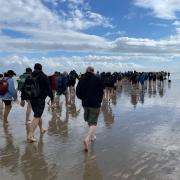



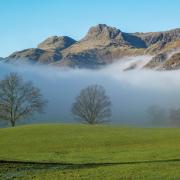

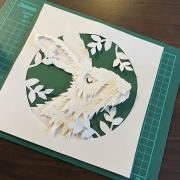

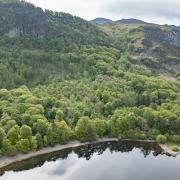

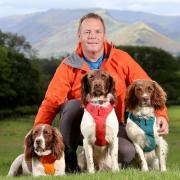



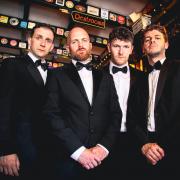



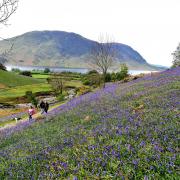
![Cookham Barns 1925, Gilbert Spencer, Abbot Hall [credit Liss Llewellyn]](/resources/images/128x89/1x/17938067.jpg)
![Cookham Barns 1925, Gilbert Spencer, Abbot Hall [credit Liss Llewellyn]](/resources/images/180x180/1x/17938067.jpg)
